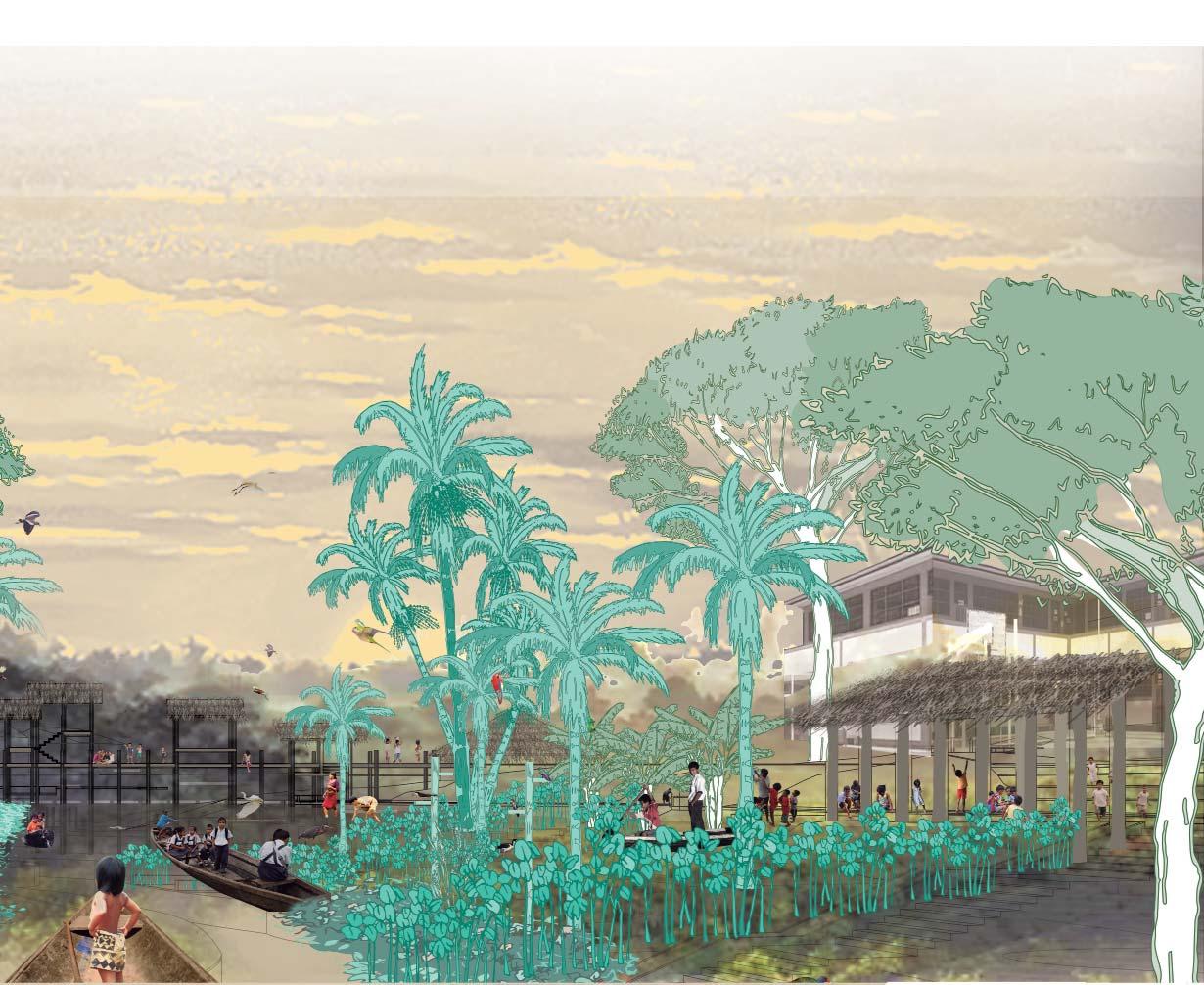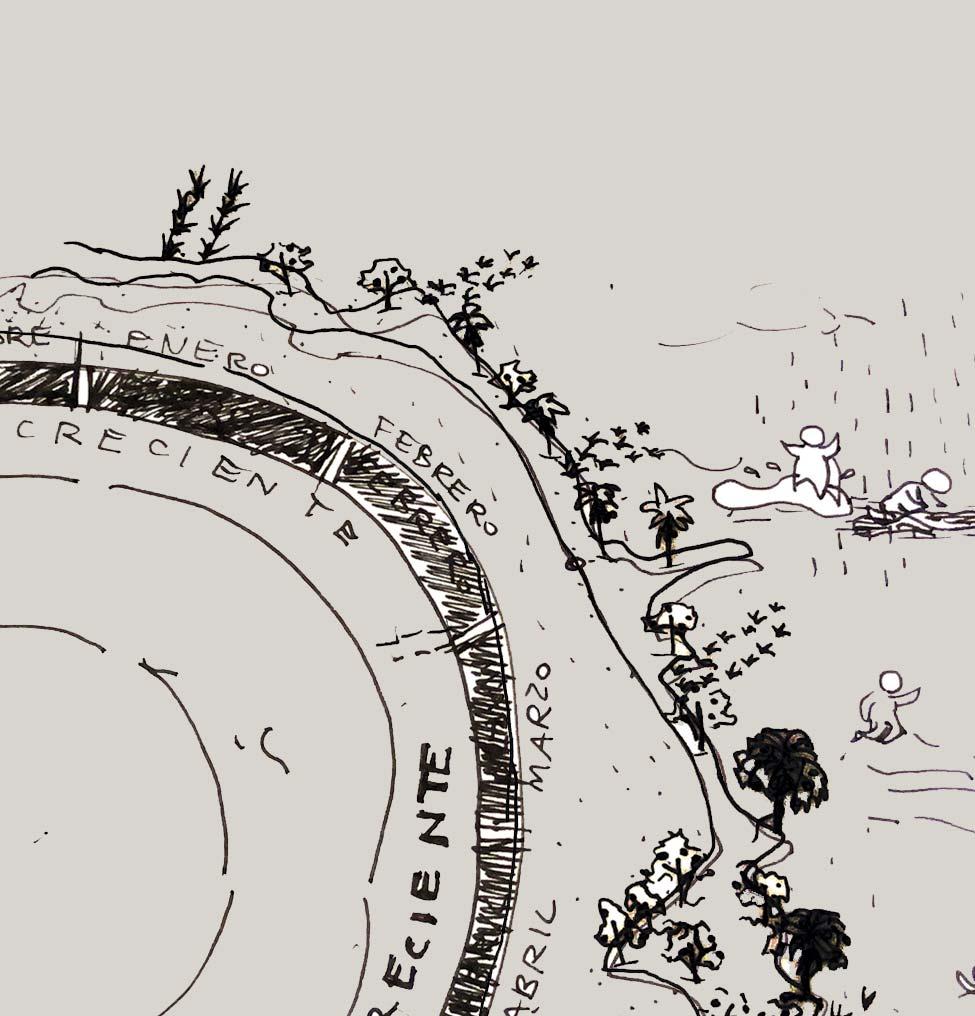

URBAN CREEKS
AS LUDIC AND EDUCATIONAL SCENARIO
THE PUBLIC SPACE CONCEPTION STARTING FROM THE IMAGINARY OF CHILDREN OF THE AMAZON CITY

ARCHITECTURE AND URBANISM FACULTY PONTIFICAL CATHOLIC UNIVERSITY OF PERÚ
ADVISERS
AUGUSTO ROMÁN
SUSANA LÓPEZ
CÉSAR TARAZONA
MONTAÑEZ MARTÍN
ROSA DE FÁTIMA CONSTANZA GARCÍA SOBREVILLA

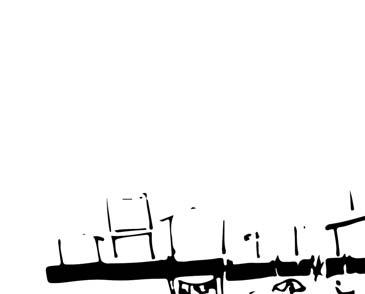




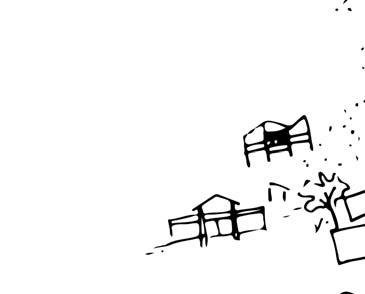
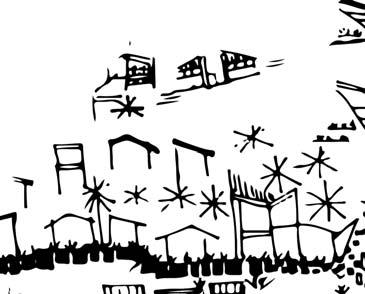



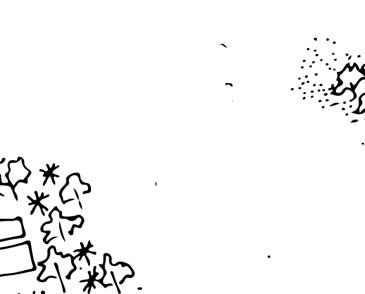
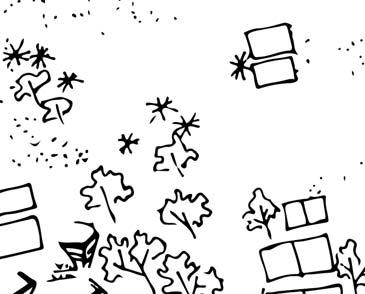









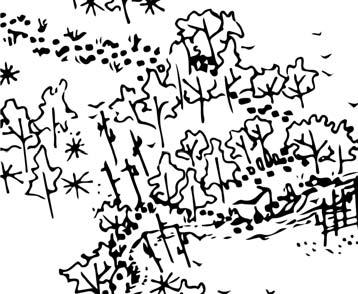

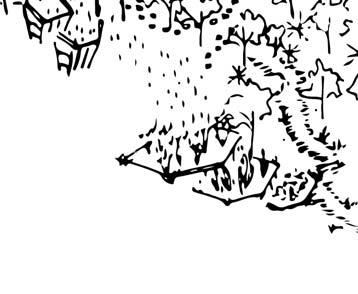







0-4

-20%-15%-10%-5%0%5%10%15% MUJERES HOMBRES

BEING CHILDREN
IN THE AMAZON CITY

Iquitos is the main Peruvian Amazon city. We can also say Iquitos is a “children city”: More than 50% of their population is under 15 years old. These facts remark the importance of designing public spaces for chilhood in the Amazon City.

Iquitos periphery is mainly composed by informal city: The most dense and vulnerable sector, but also the most connected with nature.

Is it possible to take the values of informal city for understanding how to encounter those natural scenarios in a way that incorporate children?





URBAN CREEKS OF IQUITOS
STUDIED CASE: RICARDO PALMA CREEK




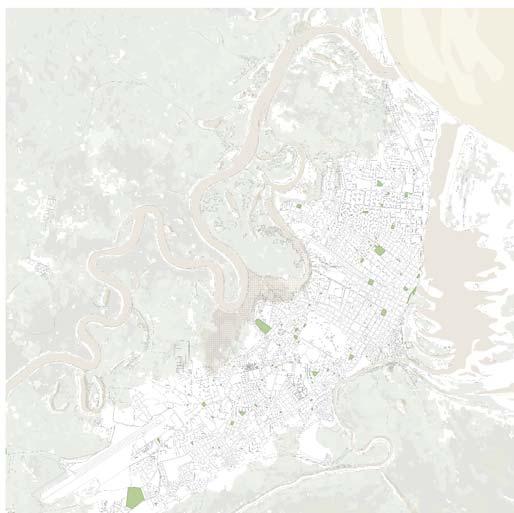


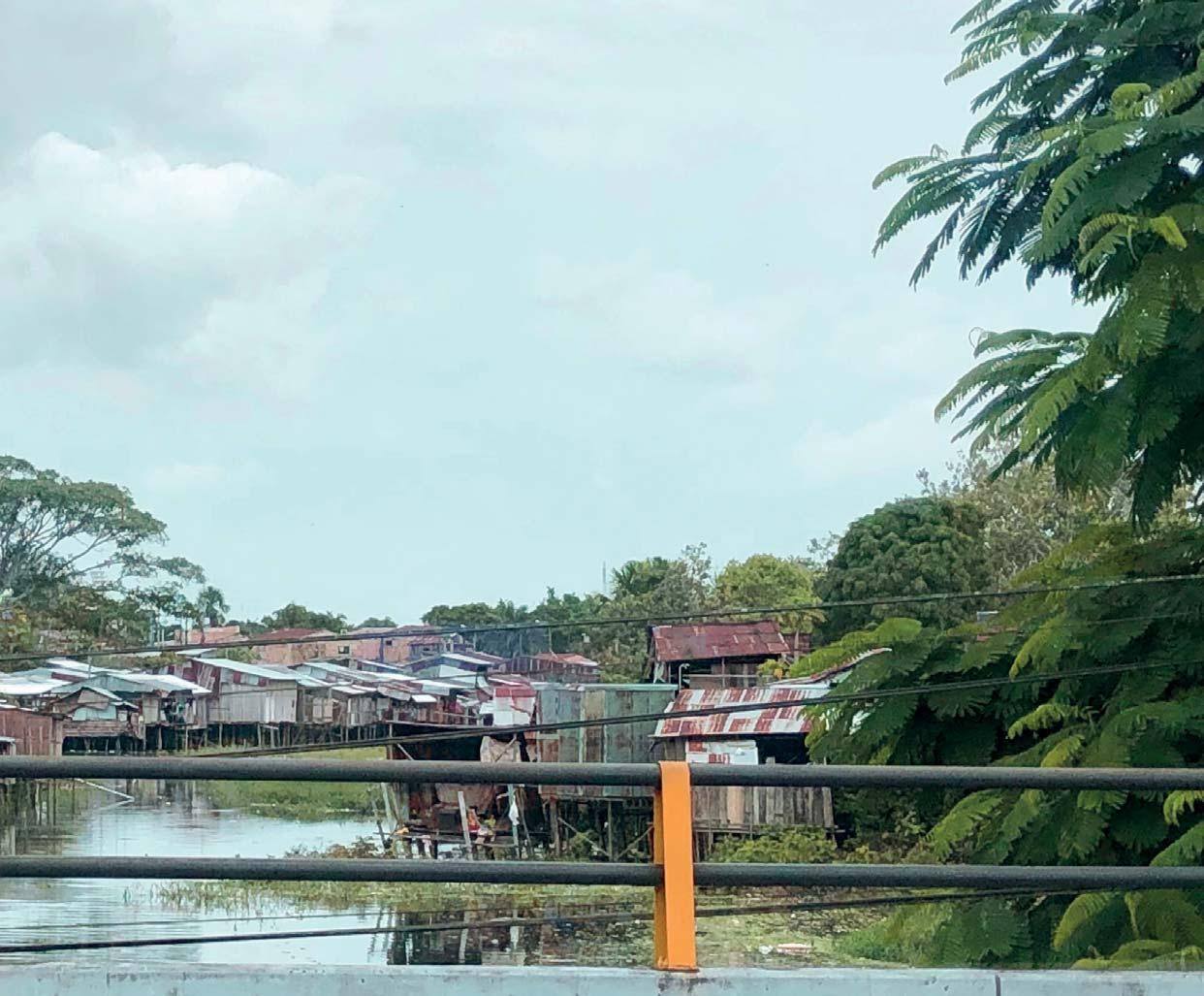
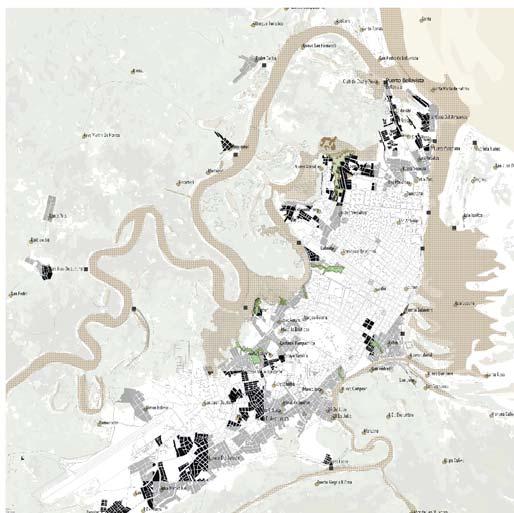


Urban creeks in Iquitos are the meeting space of three elements: the nature of it ecosystems, the informal city in its boundaries and the schools close to them. This condition make the urban creeks the encounter between children and nature. The opportuniy for creating public space for the childhood.

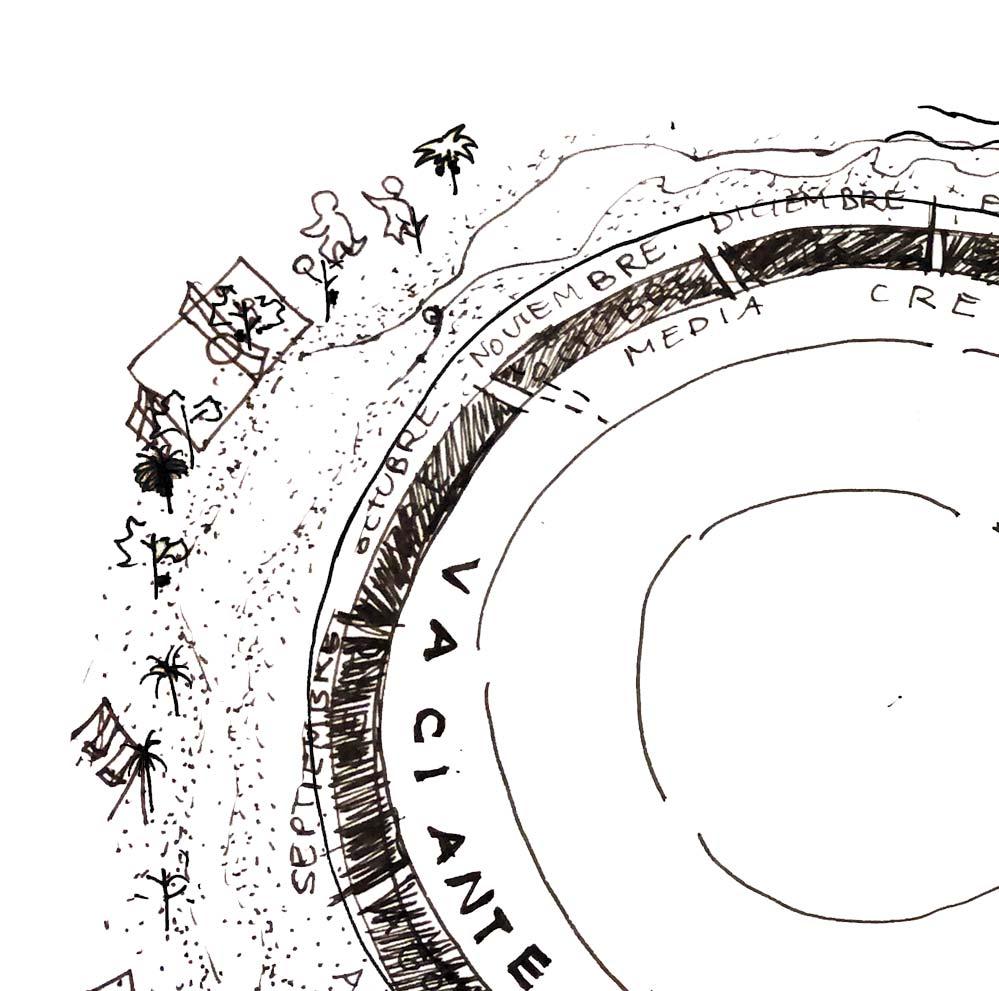

SHARED SPACES
PARKS
Outdoor adaptive spaces (public, educative) that generate encounters



activity in local spots
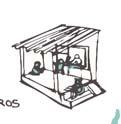
MULTISENSORIAL diversity
safe shelter spaces interaction with nature
Integrate houses’ porches and small meeting spaces for passive vigilance.
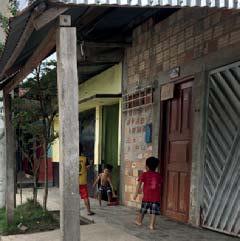
Generate ludic and learning spaces in touch with nature stimulus



IINTERACTION WITH NATURE
OUR PLAY CHANGES AS THE NATURE DOES
Frequent rains from november to may make rivers, lakes, and creeks in the Amazon to increase their volume of water, making a bigger footprint in the map, meeting the limits of forests an cities...
Life in Amazon has always embraced these changes as a chance to adapt and create. The informal Amazon city, does it. People does.
Children find an opportunity to create new play scenarios: To inhabit nature for children goes beyond the multisensory approach, the ludic or the educative one; it is a cycle that changes in accordance to the biologycal cycle that flora and fauna in Amazony experience during the year.
Project’s methology reinterprets the informal city’s play scenarios of children, turning them into action strategies for designing ludic spaces in the nature for children.

spaces in-between small disperse spots linked pathways
pile dwellings exploration small scale spaces small routes
Variety of spaces between public and private
areas according to length of stay and activity.

Generate small scales spaces: for meetings and shelters.


Create pathways to the public space considering short-length routes.

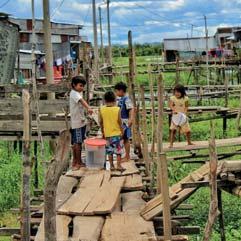





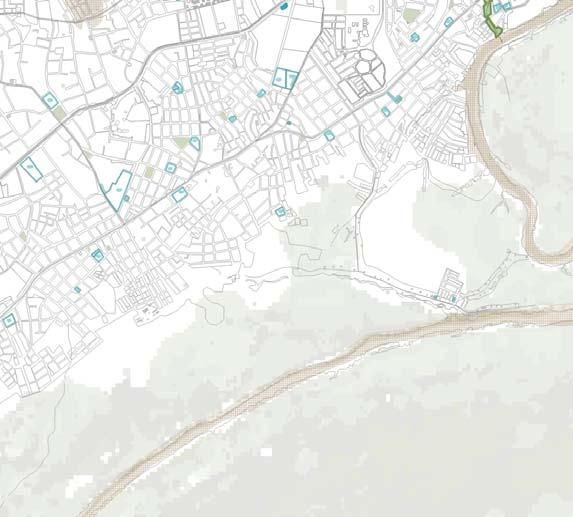





URBAN CREEKS AS SYSTEM: EDUCATIONAL PARKS FOR THE AMAZON CITY IQUITOS
REINTEGRATING THE CHILD IN OUR CITIES
The project proposes the city’s creeks as the space for developing educational parks for the childhood, by integrating school’s dynamics with the learning and playing opportunities that the Amazon ecosystems offer.
The creeks are all along Iquitos’ boundaries, so replicating this model in the rest of the creeks, can become a system for reincorporating children’ needs even from a metropolitan design perspective, which are the first steps for an inclusive Amazon city.



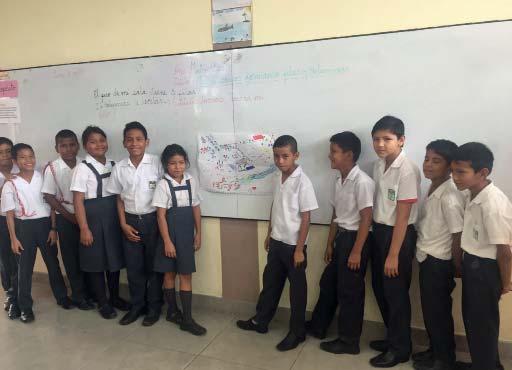
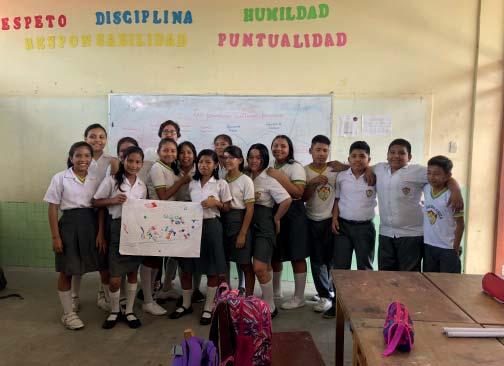

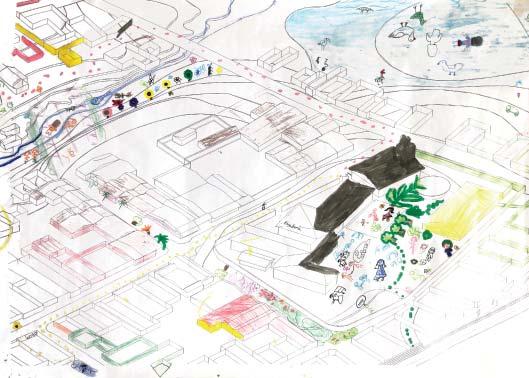
PARTICIPATIVE WORKSHOP
LEARNING ABOUT THE CREEK WITH THE COMMUNITY
Visits to four of the local schools were made in order to get to know children’ perception about their school’s relation with the creek if it was accesible for them.
The four schools expressed their intentions by drawing in printed isomethric views as a base.
A participative workshop took place in one of the houses’ courtyard where children usually atend for playing.
An empty model and materials fro drawing, molding and decorating where provided to a group of 10 children who expresed their ideas by this.
All the collected information was a base for deciding where to intervene and how to do it.




RICARDO PALMA CREEK EXITENCE
AN
OPORTUNIITY TO IMPROVE THE LEARNING MODEL ACCORDING TO LIFE IN THE AMAZON
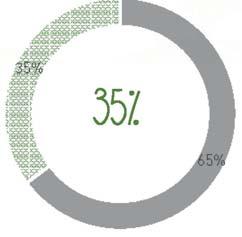

Percentage of natural area integred to schools’ learning processes




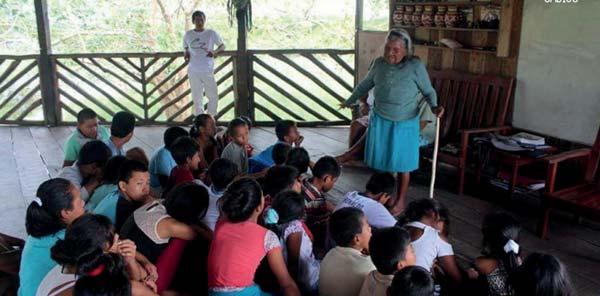


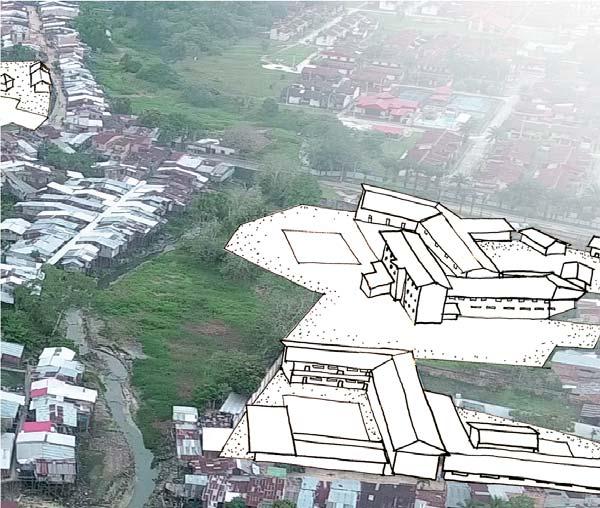

“IKUARI”

ALONG AND NEAR THE CREEK 10 SCHOOLS:
3 Kindergardens, 4 Elementary, 3 Highschols


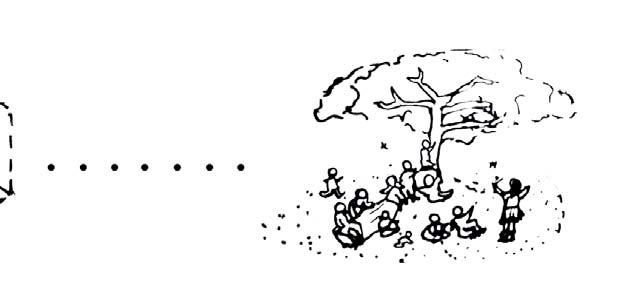
Despite the schools along the 800 m. of the “Ricardo Palma” creek are surrounded by nature, they have perimetric walls that cut their relation with nature. Only 35% of the natural area of the creek is integrated to the school learning dynamics.
This is a proposaal for taking a step above the current enclosured educational model and seeing the creek itself as an outside school, converting it in an integrative park for children in the Amazon City.
The project revalorates the local way of teaching of the “Kukama” native community: In the “Ikuari” walking school, children visit the different ecosystems at the same time taught about them.

MASTERPLAN: THE “RICARDO PALMA” CREEK AS AN EDUCATIONAL RECREATIVE PARK
EXPLORATION OF POSIBLE PLAY SCENARIOS
The second sector of the creek has purified water at a safe level f or active int eraction with children. It complements the nature and the schools around it, the design is focused on adapting space for children’ routes and use.


WATER AND CREEK’S ECOLOGYCAL RECUPERATION AREA
Phytodepuration garden for the creeks water treatment. Interaction with water changes according to the purifying level, incorporating exclusively c ontemplative sector s, to those where interaction with vegetation is pos sible like the bamboo and flow er gardens..


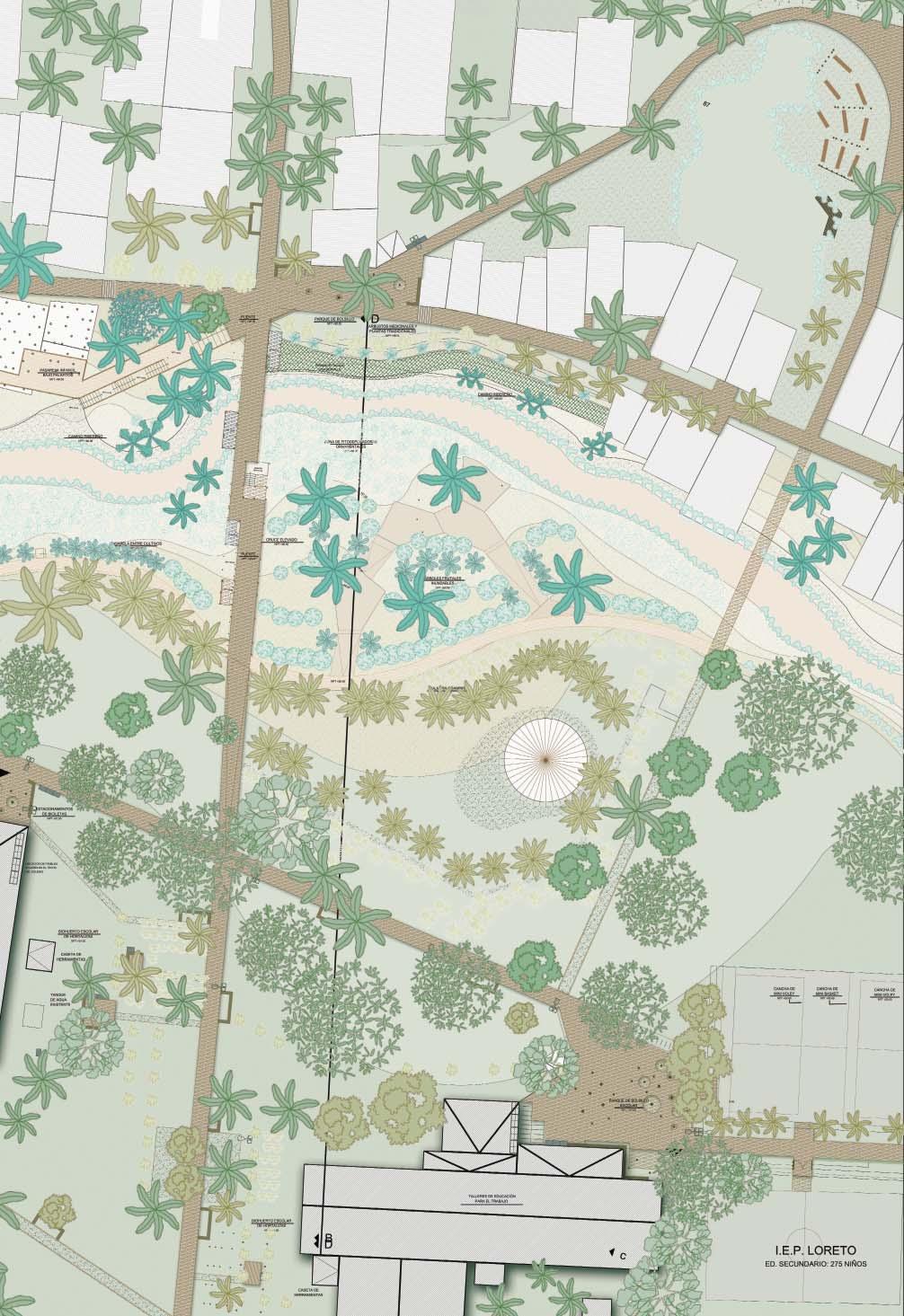

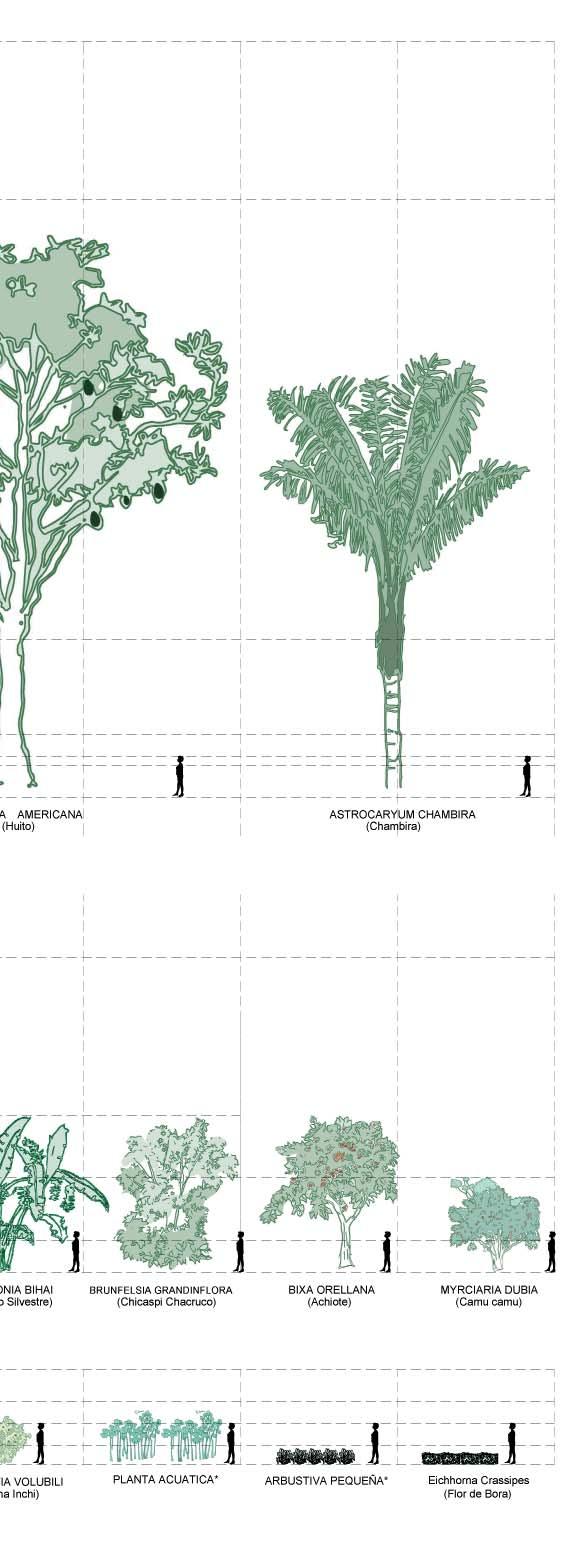
AMAZON VEGETATION CATHALOG AND THE CHILDREN
SCALE AND INTERACTION POSSIBILITIES
Study of the endemic flora of the Amazon and how each species can be used to create different interaction condition with the children.
Because height is the most variable charesteristc the formulated question would be:
How can architecture manage to improve this multisenorial relation between vegetation and children?


CONTEXT: NATURE IN THE AMAZON

CONTEXT: INFORMAL AMAZON CITY

“PALAFITOS”: THE PILE DWELLINGS AS SYSTEM
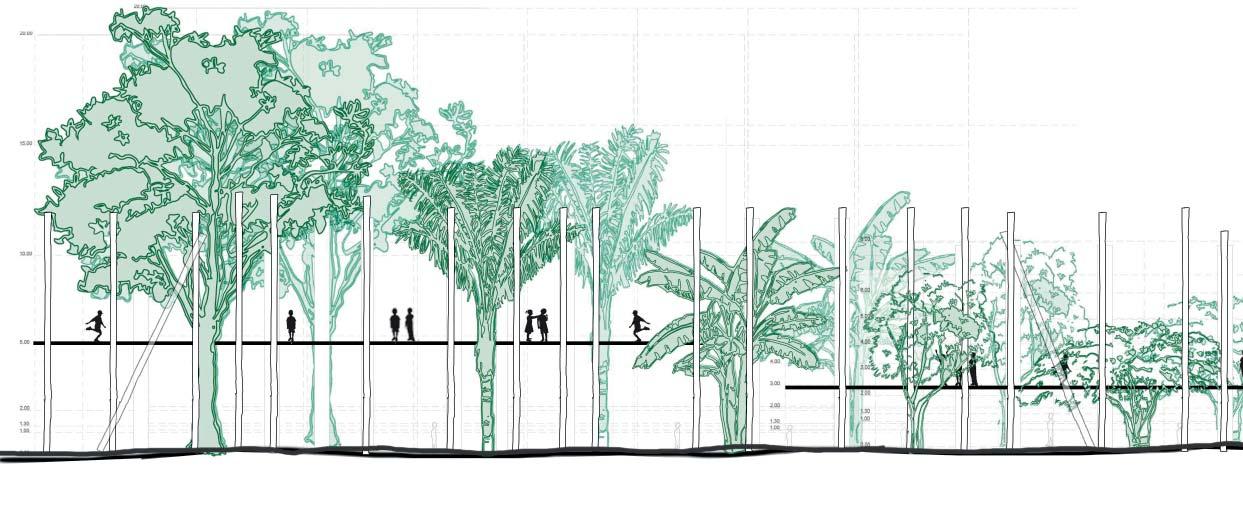
BEWTEEN SHORES: BRIDGE ACROSS THE CREEP
HOUSES - NATU LUDIC PATHWAY
SPACES IN-BETWEEN THE RELATION WITH NATURE
THE “MALOCA” LOCAL TIPOLOGY AS MODULE
ROOFING
Periodically changed palm tree’s leaves: Irapay or yarina.
JOISTS
Capirona wood.
JOINTS
“Tamshi” vegetal fiber
BEAMS
Capirona wood 4”
“SOLERA”
Tortuga caspi wood de 6”
RAILING
Woven “chambira” vegetal fiber.
COLUMNS
Shungo wood 8”
HUMIDITY THREATMENT
Tar cover to the columns until the flooding level
FOUNDATION
Concrete: 0.25 x 0.25 x 1.20 m. for direct contact with the humid terrain. 20 cm over earth level.

If the Amazon is composed by tall threes, the informal city sums to it the vertical formal language of the “palafitos” in the pile dwellings.
From the reinterpretation of this element, an intervention system of minimal architecture is created, so it allows us to explore the variety of forms for interacting with nature through variations of height, closeness to the flooding level and flora and fauna.



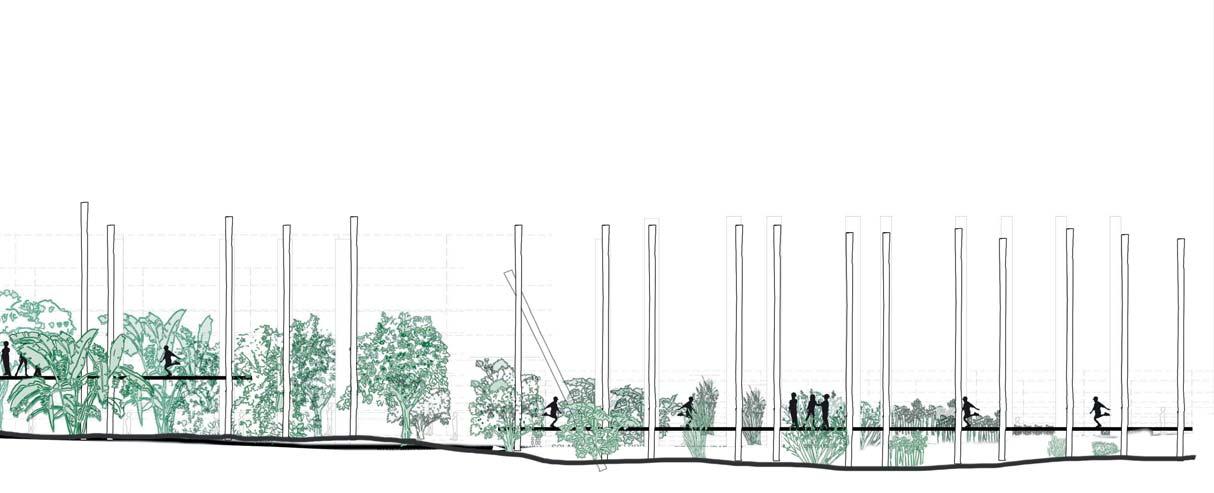
URE RELATION:
Y BETWEEN THE ELLINGS
SCHOOL - NATURE RELATION: LEISURE SPACE FOR THE SCHOOLS’ BOUNDARIES
VEGETATION

SMALL BUSINESSES
WAY TO SCHOOL PRE-EXISTENCES

COMMUNITY’S MEETING POINTS

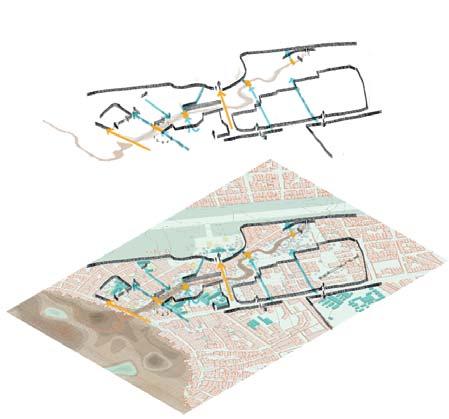
 MAIN PARK AXE D
MAIN PARK AXE D

DESIGNING IN ACCORDANCE TO THE SEASON CHANGE FOR THE RELATIONSHIP WITH NATURE IN AMAZON CITY
SEMI-ACTIVE SENSORY PLAY
EXTERIOR PLAYGROUND
SYMBOLIC SENSORY PLAY
ECOLOGYCAL WORKSHOPS
SYMBOLIC SENSORY PLAY
ECOLOGYCAL WORKSHOPS
PLAY
SPORTS FACILITIES
FLOODABLE GARDEN VALORACIÓN DE CONDICIONES
CRECIENTE Y VACIANTE Y USO DE VEGETACIÓN COHERENTE REVALORANDO LA RIQUEZA FRUTAL-MEDICINAL DE LA SELVA E INCOPORANDO UNA ZONA TRANSICIONAL DE VEGETACIÓN DE SUELOS HUMEDOS.
DYING PLANTS GARDEN
CULTIVO DE ESPECIES DE FIBRA Y TINTES NATURALES PARA EL APRENDISAJE SOBRE EL USO ARTESANAL QUE SE REALIZA ANCESTRALMENTE EN LAS COMUNIDADES DE LA SELVA + MALOCA COMUNAL.
SCHOOLS’ ORCHARDS
CONCEPCIÓN COMO ESPACIO EXTERIOR COMÚN A LOS COLEGIOS POSIBILITANDO OPORTUNIDADES DE INTERACCIÓN SOCIAL Y APRENDER DEL CARÁCTER PRODUCTIVO DEL PAISAJE.
SPORTS AREA
CANCHA RE-ORIENTADA Y DE USO MÚLTIPLE PARA HACER DEPORTE FUERA DEL HORARIO ESCOLAR (ABIERTO A LA COMUNIDAD)
Re-thinking the uses of public space in the Amazon considering the rain cycli and its influence in the diversity of Amazon Ecosystems.
This is also in accordance to the given informationg by the community about the life around the creek: -The existing vegetation. -Small Businesses. -Community’s Meeting Points. -Way to School.
THOSE ELEMENTS ALLOW TO CREATE AN AXE OF RECREATIVE SPACES FOR SCHOOLS WITH THE DIVERSITY OF THE LUDIC SCENARIOS IN THE AMAZON!
PARKS DESING FROM THE RAIN CYCLE
SECTION D-D: MAIN PARK AXE
DIFFERENT LANDSCAPES PROPOSALS FROM THEIR RELATION WITH RAIN AND CREEK

FLOODABLE AREA The most fertile of Amazon. “GALERÍA”
Humid zone, the trees that grow here can be constantly relocated.
NATURE AS A PLAYGOUND
Tophography treatment for ludic installations: Slides and climbing area

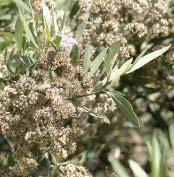
“RESTINGA” Sew of fruit trees semi adapted or totally adapted to the sesonal floods
NATURE AS FOOD PROVIDER Fuit and palm trees adapted to the floodable season



PHYTHODEPURATION GARDEN CURATIVE PLANTS
PHYTHODEPURATION GARDEN
Water-cleaner species, installations for aquatic birds. Coexistence with fauna.
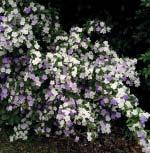


Shore next to the creek, floodable bushes grow here, phytodepurative plants (ingrained or floating ones)are part of the water purifying process.
NATURE AS HEALER
Curative and traditional plants area
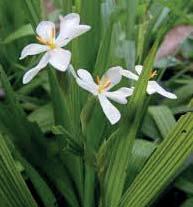

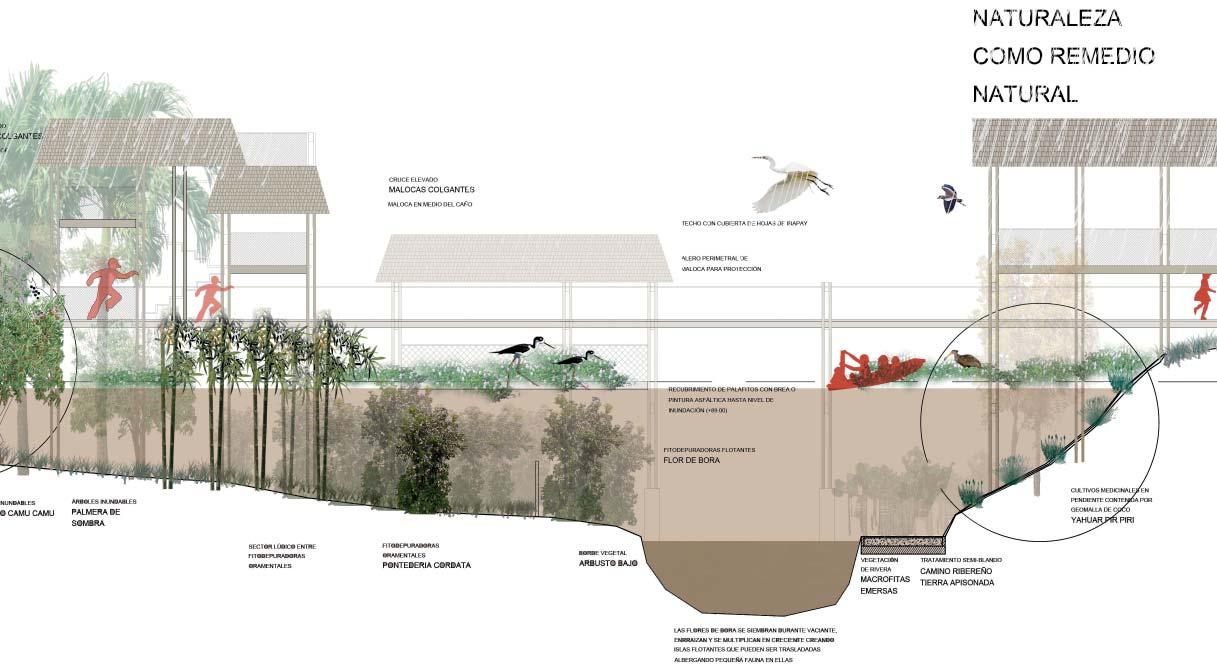
SECTION C-C: DWELINGS - SCHOOL OUR WAY FROM HOME TO SCHOOL
A DAILY ROUTE FILLED WITH EXPERIENCES IN THE NATURE

LUDIC PATHWAY BETWEEN PILE DWELLINGS
PYTHODEPURATION GARDEN CONSOLIDATES THE HABITAT OF THE AQUATIC BIRDS, GIVING THE OPPORTUNIITY TO LEARN FROM IT
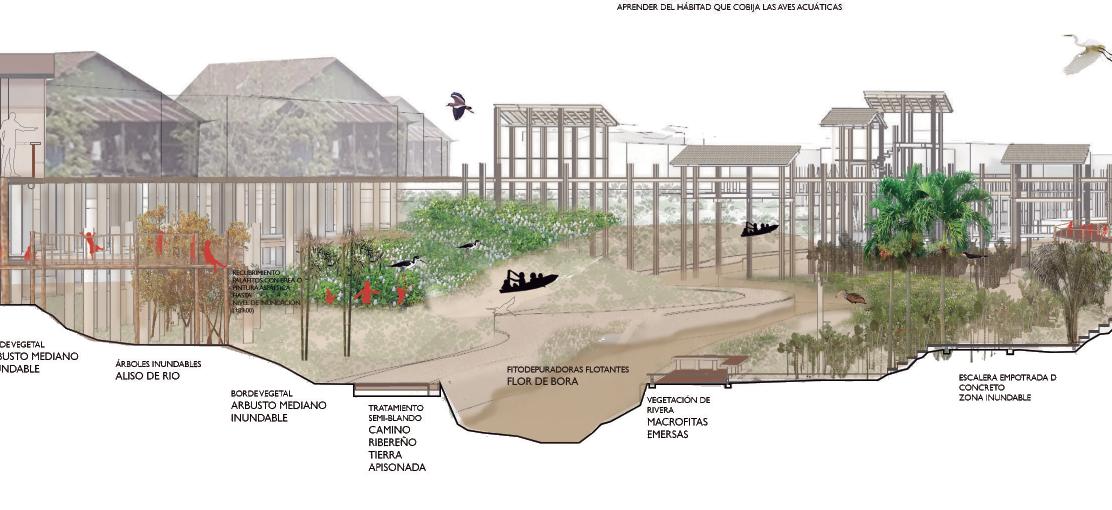

LEISURE SPACE FOR THE SCHOOL’S BOUNDARIES GIVES A RESPONSE TO THE LIMIT BETWEEN SCHOOLS AND THE LANDSCAPE OF THE CREEK. PROPOSING FURNITURE FOR THE SCHOOLS’ PUBLIC SPACES.

SECTION A-A: DWELINGS - SCHOOL PORT - SCHOOL OUR WAY FROM HOME TO SCHOOL
A DAILY ROUTE FILLED WITH EXPERIENCES IN THE NATURE
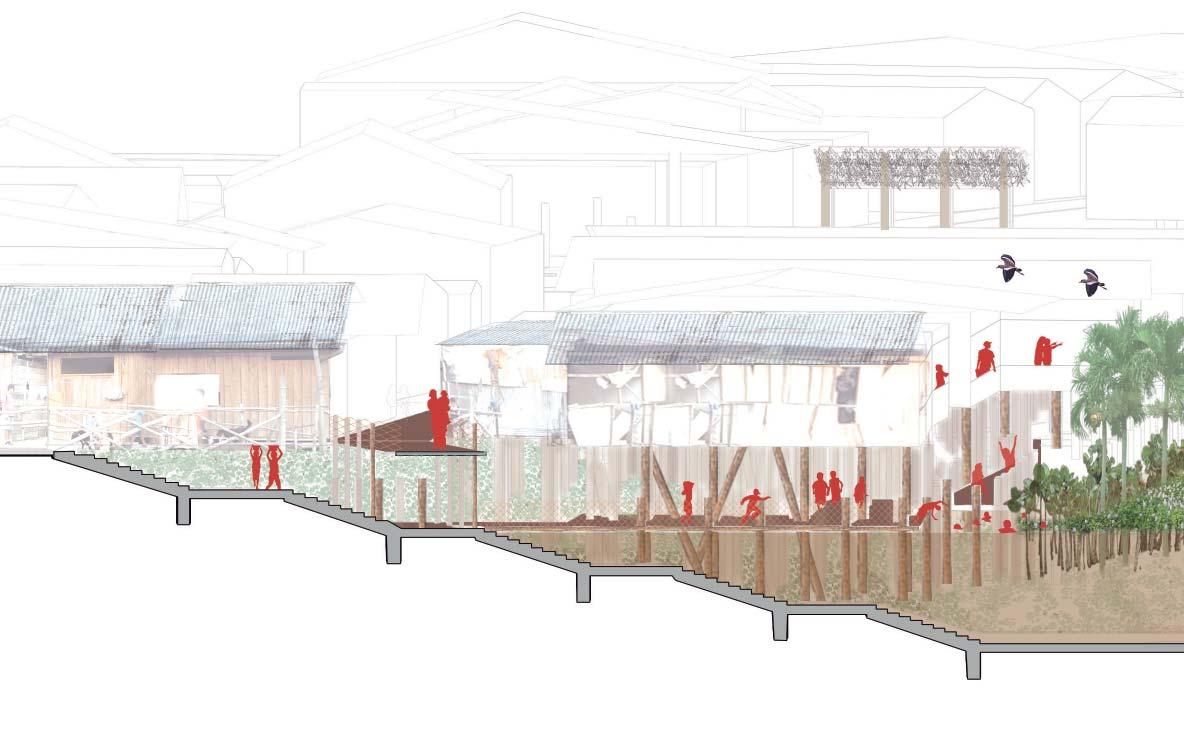
our homes are near!
DWELLING FRONT THE NEIGHBORHOOD RUTINE KEEPS THE PUBLIC SPACE ACTIVE DURING THE DAY. WAY FROM THE SHELTER GIRLS HOUSE



POCKEY PARKS FOR THE AMAZON CITY
INCOPORATING THE ESSENTIAL ELEMENTS FOR
PUBLIC SPACE NEXT TO SCHOOLS
Pocket parks take adaptability as their main goal, they integrate the daily school population, consolidating as an encounter spot.
What does public space right next to schools in Amazon need?
The proposed elements were placed according to the information given by local community druing the participative sesions, allowing to understand and cover the limitations and needs of the place.
ACORDE A LA EDUCACIÓN EN CUIDADO MEDIO AMBIENTAL Y RECUPERACIÓN DEL CAÑO COMO MEDIO NATURAL DESDE SU ESTADO ACTUAL CONTAMINADO
COMPOST-RECYCLE AREA

USO DE PANELES SOLARES PARA TENER ENERGÍA NOSTUCNA ESTABLE. ASI LOS PARQUES DE BOLSILLO SE CONSOLIDAN COMO PUNTOS DE REUNIÓN INCLUSO DE NOCHE.
 CAMINO HACIA RESTO DEL PARQUE!
STABLE NIGTH LIGHTHING: SOLAR PANELS FOR ENERGY
CAMINO HACIA RESTO DEL PARQUE!
STABLE NIGTH LIGHTHING: SOLAR PANELS FOR ENERGY

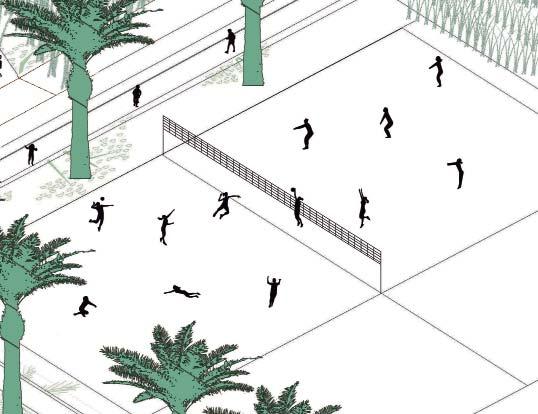
SALIDA DESDE EL BORDE PERMEABLE
HACIA EL PARQUE DE BOLSILLO

COMPLEMENTARIEDAD DE USO CON ESCUELA
ESPACIOS DE ESPERA
EXTERIOR Y RECORRIDOS SOMBREADOS
ESTACIONAMIENTO DE BICICLETAS
TRIBUNA PARA USOS DEPORTIVOS, DE LECTURA SEMI EXTERIOR Y ESTARLEISURE SPACE FOR SCHOOLS’ BOUNDARIES
RE-THINKING THE REALTION OF SCHOOL AND NATURE
Schools in the creek are currently fenced or have walls in all their boundaries, so despite they’re located right next to the creek, they do not take advantage of the potential relation with nature. This space aims to function as a transcitional border between nature and school, integrating both and displaying activity in the middle related to school’s rutine .
Its is also used as a shelter for children while waitng for their parents to come, or as an leisure area to use during recess.

BORDE VEGETAL DE TRANSICIÓN HACIA EL PARQUE TRATADO CON JARDÍN DE LLUVIA
ESPACIO CONBIJADO DE LAS CONDICIONES CLIMÁTICAS A LA HORA DE RECREO Y SALIDA

ZONA DE HAMACAS INDIVIDUALES
CIMENTACIÓN DE CONCRETO DE 0.25 X 0.25 X 1.20 m.
PALAFITOS DE MADERA SHUNGO DE 8”
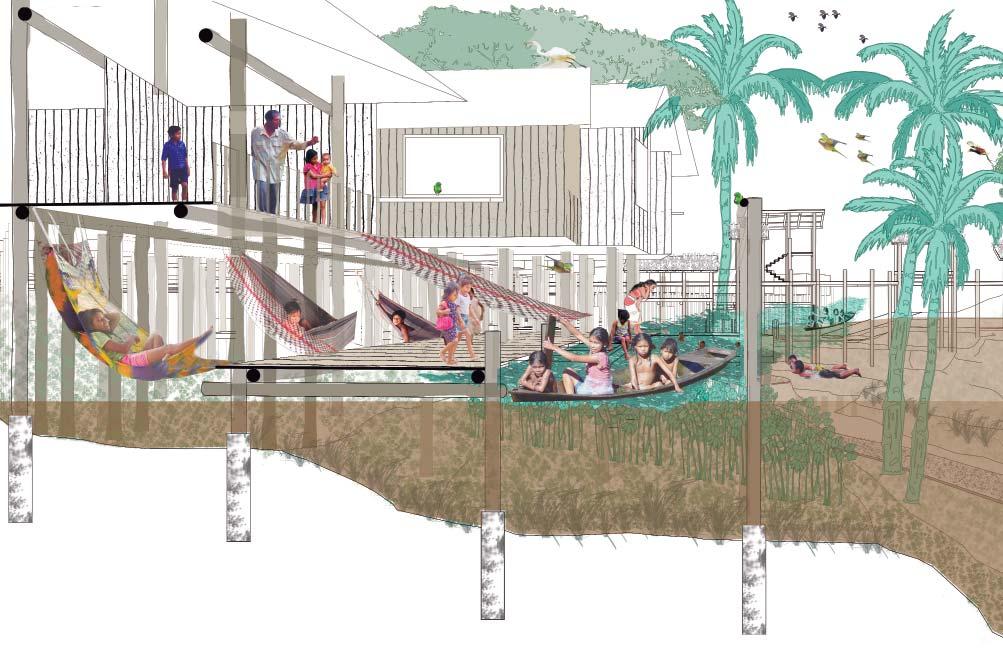
POTENCIAL: APERTURA DEL FRENTE DE LAS VIVIENDAS HACIA EL PARQUE. LA CONFIGURACIÓN VERSÁTIL DE ELLAS PERMITIRÍA ESTA ADAPTACIÓN
EL CIMIENTO SOBRESALE 20 CM. PARA AISLARSE DEL TERRENO ZONA DE EMBARQUE DE PEQUE PEQUES
HAMACA GRUPALSECTOR LÚDICO

EJE DE ÁRBOLES COMO ESTRATEGIA BIOCLIMÁTICA PARA AUMENTAR LA VELOCIDAD DE LAS CORRIENTES DE AIRE
ZONA DE ESTAR HAMACAS
CONECCIÓN CON PUENTE
LUDIC PATHWAY BETWEEN PILE DWELLINGS
A SPACE CLOSE TO CHILDREN’S HOMES FOR PLAYING IN TOUCH WITH NATURE
SECTOR LÚDICO
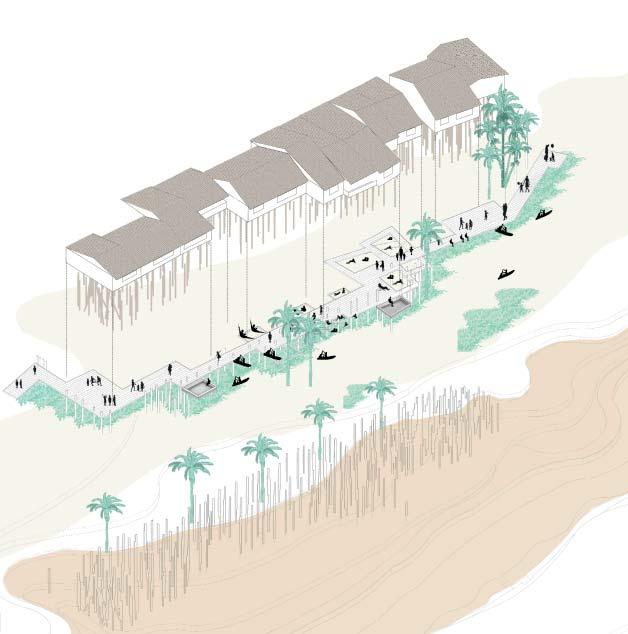
SECTOR DE PISCINAS
ZONA DE EMBARQUE
FITODEPURADORAS FLOTANTES EN TEMPORADA CRECIENTE
The pile dwelling tipology in the “Ricardo Palma” creek has columns with a variety of heights. During the floodable season, it protects the houses from it, but during the dry season we have it as a potential space: it is shaded area, right next to the nature and literally under the houses.
That means parents can easily check for their child’s security while they play next the creek experiencing their seasonal changes throught the year.
It also al lows spontanous small interventions like the hanging of hamacas, which is a typical habit for people in calid-humid cities.
RECORRIDO POR PASARELA ENTRE COPAS DE ÁRBOLES FRUTALES
RELACIÓN VISUAL CON AVES Y VEGETACIÓN DE MAYOR ALTURA

ACTIVIDADES LÚDICAS Y DE DESCANSO
ACTIVIDADES DE DESCANSO Y JU LACIÓN A CRECIENTE DEL AGUA ORILLA
VACIANTE: CERCANÍA A VEGETACIÓN POR UN EJE SOMBREADO. OCUPACIÓN ESPONTÁNEA DE LA ZONA INFERIOR DEL PUENTE
ACERCAMIENTO PASIVO A LA FAUNA ACUÁTICA EN MEDIO DE VEGETAIÓN FITODEPURADORA VERTICAL

CRUCE ELEVADO PERMITE RELACIÓN VISUAL CON LAS COPAS DE LA VEGETACIÓN MÁS ALTA DEL PARQUE
UEGO EN REA CERCA A LA

INCREMENTO DE FAUNA ACUÁTICA
CRECIENTE
CRUCE Y RELACIÓN
CON EL AGUA EN CRECIENTE POR CERCANÍA A LAS MALOCAS
UBICADAS A COTA MENOR
RECORRIDO DEL CAÑO MEDIANTE EL MEDIO LOCAL: PEQUE PEQUES
BRIDGE ACROSS THE CREEK
A MULTISENSORY CROSSING FOR LINKING SCHOOLS IN THE BLOCK
The bridge conects all schools along the block. It is proposed as a straigth wooden pathway with “malocas” shelter modules across it located at different heights, whick al lows diverse int eraction with the changing scenario. This premise responses to the inhabit logic in the Amazony.
The leisure spaces are protected under roof revalorating the “maloca” traditional tiplogy, their use can be determined by the community in accordance to their needs like: small selling of fruit and handcrafts, sightseing and school lessons in the nature conducted for small groups.
ACTIVIDADES LÚDICAS Y DE DESCANSO
CRUCE ELEVADO GENERA RELACIÓN VISUAL HACIA EL PAISAJE DE LA LAGUNA MORONACOCHA
SIGUIENDO EL EJE DE AGUA
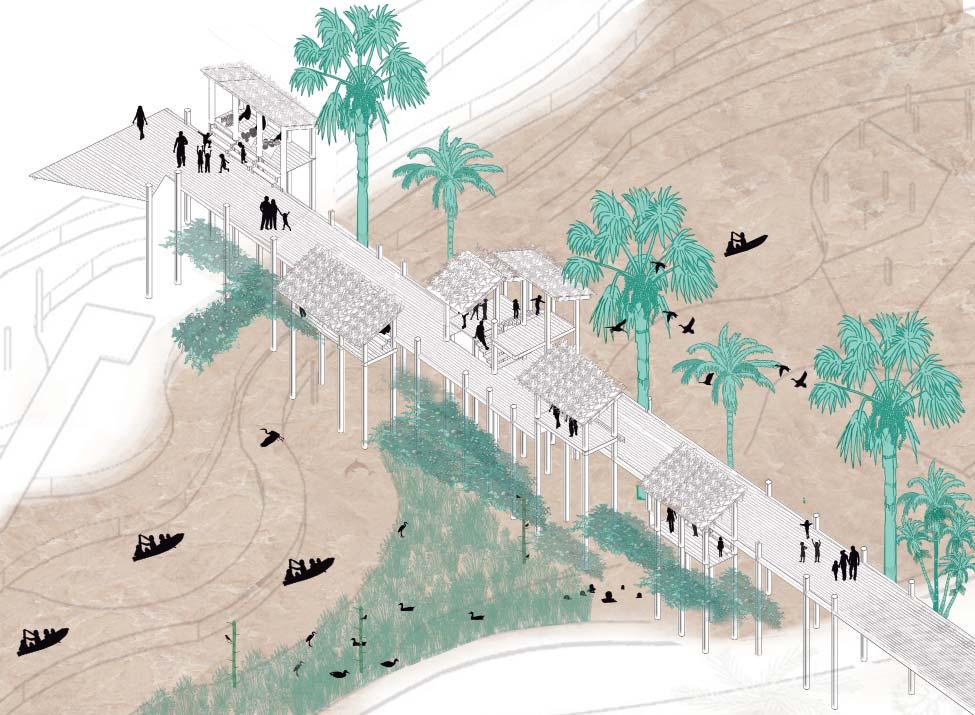
DYNAMIC LANDSCAPES FOR THE AMAZON

JARDÍN DE FITODEPURADORAS
ZONA CON VEGETACIÓN PURIFICADORA DEL AGUA QUE CREA UN HÁBITAT DE HUMEDALES DEL QUE LOS NIÑOS PUEDEN APRENDER
ELEMENTO SISTEMA: ESPACIOS INTERMEDIOS.
TRATAMIENTO DEL BORDE ESCOLAR
COLEGIO ELEODORO BUSTAMANTE GOMEZ
COMO ESPACIO COMÚN A LOS COLEGIOS
COLEGIO LORETO
ELEMENTO SISTEMA: ESPACIOS INTERMEDIOS.
TRATAMIENTO DEL BORDE ESCOLAR
ELEMENTO SISTEMA: ESPACIOS INTERMEDIOS.
TARTAMIENTO DE BORDE DE VIVIENDAS
HUERTO ESCOLARJARDÍN DE ESPECIES TINTÓREAS
INCLUYE LA CHAMBIRA COMO PALMERA DE FIBRA VEGETAL PARA ARTESANÍAS Y ES CONTEIDO POR ARBUSTOS DE TINTES NATURALES (ACHIOTE, MISHQUIPANGA, RETAMA Y COCONA) COMO BORDE VEGETAL
TALLER MALOCA

ELEMENTO SISTEMA: ESPACIOS INTERMEDIOS. CRUCE DE ORILLAS
ZONA DE JUEGOS ENTRE FITODEPURADORAS
SECTOR CON RESBALADERAS Y RECORRIDOS ENTRE VEGETACIÓN VERTICAL
ZONA DE PLANTAS TRADICIONALES
EN EL FRENTE DE LAS VIVIENDAS PARA CERCANÍA A LA COMUNIDAD
ENTRE FRUTALES
PUENTE LOCAL HACIA VIVIENDAS PASARELAMOVILIDAD DE PEQUE PEQUES
DYNAMIC LANDSCAPES FOR THE AMAZON
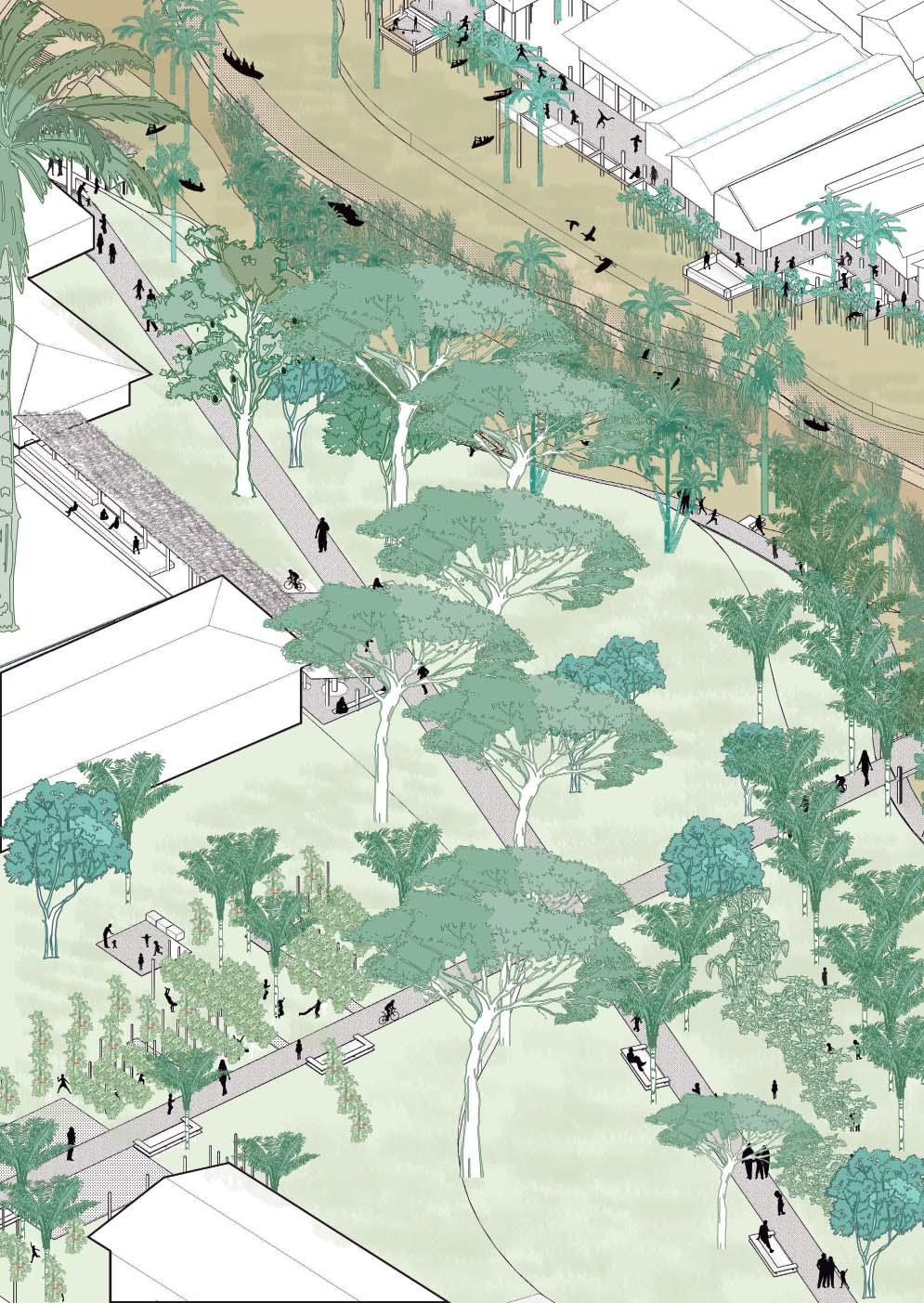
ELEMENTO SISTEMA: ESPACIOS INTERMEDIOS. TARTAMIENTO DE BORDE DE VIVIENDAS
JARDÍN DE FITODEPURADORAS
COBIJA AVES ACUÁTICAS DURANTE CRECIENTE
ELEMENTO SISTEMA: ESPACIOS INTERMEDIOS.
TRATAMIENTO DEL BORDE ESCOLAR
COLEGIO ELEODORO BUSTAMANTE GOMEZ


